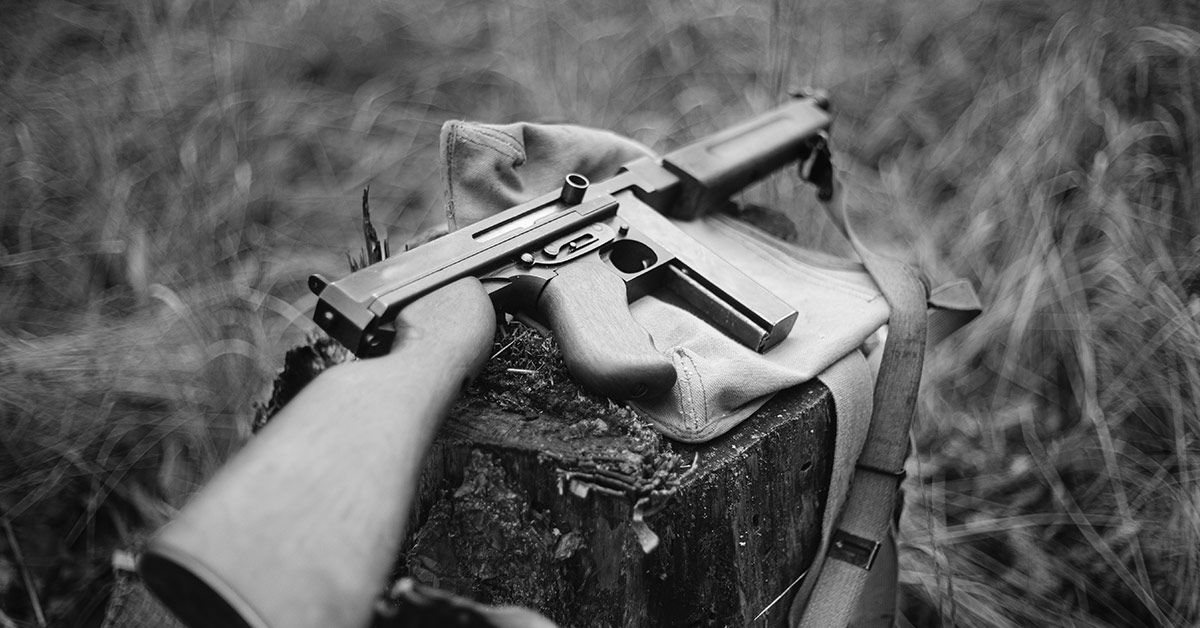During World War II, there was hardly a part of Europe that the Nazis didn’t touch. This includes Norway. The northern European nation, however, also had one of the strongest Nazi resistance on the entire continent. The strongest contingent of this resistance? The teachers and their students. This is the story of the paper clip resistance in Norway during World War II. (1)
Why Teachers and Students Wore Paper Clips During World War II
When Nazi Germany first attempted to take over Norway during World War II, the country resisted. Unfortunately, this small nation was no match for the force that was the Nazi army in 1940. The Norwegian King and government were forced to flee to London and Norway was now under Nazi control. The new regime told Norwegian teachers that they now had to teach nazism in schools. The teachers, however, refused. (2)
The Nazis banned all symbols related to the Norwegian Royal Family and state, so teachers, families, and students got creative in subtly showing their resistance. They used the humble paper clip. Teachers wore paper clips on their lapels and students often wore them as part of a necklace or bracelet. When you saw someone wearing one, you knew that they were a part of the resistance – and nearly everyone was.
Why The Paper Clip?
There are a number of reasons why the Norwegians chose the paper clip as their quiet symbol of Nazi resistance. Some suggest it was likely due to the false fact that a Norwegian man invented the paperclip. While there was a Norwegian man who invented a version of the paperclip, he wasn’t the first person to come up with the concept, nor is his version the one that we use today. Still, many Norwegians associate it with the country. (3)
Others suggest it is because the paperclip was a metaphor for bringing or binding people together. A symbol for the unity of the Norwegian people against the Nazis, if you will. Finally, paper clips were something cheap, easy to obtain for everyone, and subtle (at least for the first few years). Eventually, the Nazis did catch on that the paperclip was a symbol of rebellion against them. They quickly made wearing a paperclip a criminal offense.

Read: 3,700-Year-Old Babylonian Stone Tablet Gets Translated, Changes History
Nazi Occupation in Norway
In 1942, the occupying Nazis told all teachers that they had to join the Nazi-led teacher’s union. There, the teachers had to pledge their allegiance to Hitler and the Reich and begin teaching Nazi propaganda to the children. Thousands of teachers and parents wrote letters in protest. In just two months, at least 90% of Norway’s teachers left the union, a move that took away all of the union’s power in the country.
This, however, did not stop the Nazi regime. They closed schools and refused to pay 10,000 of Norway’s 14,000 teachers’ salaries. German soldiers arrested one in 10 teachers, where leaders then pressured them to rejoin the union. They rounded up teachers and took them to concentration camps. The guards and wardens withheld food and forced the teachers to march and crawl through the snow in the darkness while performing hard labor. They beat and tortured them.
Students also took a stand in solidarity with their teachers. They turned their backs on Nazi soldiers, sang patriotic songs when inspectors entered classrooms, and most high school students refused to join the Nazi Youth movement. Inspectors often beat students and teachers right there in the classroom, but still, the people resisted.
Many university students began gathering intelligence for the Allies and also participated in the resistance. Thousands of students – high school and university – were arrested. Though eventually, the Nazis released many, they also sent several hundred to “retraining camps”.
Solidarity
Despite this, the citizens of Norway rallied behind their teachers and students. Residents would often line the railroad tracks of trains carrying teachers toward certain torture and sing songs in support and give them food for their journey. People refused to accept bribes and refused to allow fear to stop them from speaking out and rallying against the Nazis.
Jewish People In Norway During World War II
At the outbreak of World War II, in which Norway had initially declared neutral, there were roughly 1,700 Jewish people living in the country. When the Germans invaded, about 900 of these people escaped to Sweden thanks to the courageous efforts of non-Jewish Norwegian citizens. Still, the Nazis captured nearly half of the Norwegian Jews and sent them to Auschwitz. At the end of the war, only 25 Jews returned to Norway.
Norway’s resistance to the Nazis was one of the strongest and most influential. Historians call it “an unconditional ideological defeat upon Nazism in Norway”. There was a lot of suffering at the hands of the invading Reich, especially for the country’s Jewish residents and teachers. Despite this, they banded together and continued to resist until the end of the war. It goes to show how much we can hold when we stay together – sort of like the paperclip.
Keep Reading: In 1953 a scientist predicted a man titled ‘Elon’ would lead humans to Mars and crown himself ‘Martian Emperor’
Sources
- “Why Did Norwegian Teachers Wear Paper Clips During World War II?” Medium
- “German Invasion of Norway.” Encyclopedia
- “How the Humble Paperclip Became a Secret World War II Symbol.” Gizmodo. Emily Upton.

